
Sports medicine comes in many forms. Many clinics keep licensed athletic trainers on staff that will go on-site to schools and other sporting events to act as an initial care-giver at the time of an injury. If an injury occurs, your physician may refer you to physical therapy. From there, your physical therapist will have an array of different programs tailored to your specific type of injury, the severity of the injury, and your fitness level. However, you don’t have to wait until you have an injury to get help from a physical therapist. Sometimes the best medicine is prevention.
When you start to experience pain:Overuse musculoskeletal injuries occur frequently in runners. Running with aches and pains or an injury that fails to go away causes frustration and despair for millions of runners across the country. Proper stretching and training principles can reduce your risk for developing a running injury. A running injury program may include:
Training injuries are those experienced while weight training or sport-specific training. Common training injuries include:
FMS: One way to determine physical weaknesses is to perform the Functional Movement Screen. FMS is an innovative system used to evaluate movement pattern quality for clients and athletes. The functional movement screen is used to:
The Functional Movement Screen has been used by major sports leagues including the NFL, NBA, NHL and MLB. It has also been used in our military forces.
If you do experience a training injury your physical therapy treatment may include:
PTandME has partnered with Fit2wrk to bring you a comprehensive approach to industrial rehabilitation. This model is directed at mitigating risk and exposure, specifically towards lost time, expedited return to work and prevention. Fit2wrk is a national program with local expertise and the ability to customize programs to an employer’s specific needs, ensuring a maximum return on investment. From start-up to program implementation we have the tools to make the process seamless and most importantly, medically and legally compliant.
From preventive measures to post injury rehabilitation and safe, sustained return to work duties, Fit2wrk provides an integrated approach to ensuring overall client satisfaction. Our industrial specialists will review your own needs and co-develop programs designed to expedite return to work as well as positively impact future injury costs.
National Consistency of Care, Delivery & Custom Solutions:Fit2wrk’s national approach with local care delivery provides them with the ability to roll out industry specific programs including completely customizable solutions for their clients.
Communication:The basis behind treatment and services is the generation of objective outcome data, focusing on evidence based medicine. This provides clients with up to date information at all times on an employee's status. Objective testing provides clear and concise reporting based upon peer-reviewed and published data.
Services Provided by Fit2wrk Include:Fit2wrk’s direct line 1-877-FIT-2WRK (1-877-348-2975) provides you with access to their national partner provider network. Fit2wrk will take your request, confirm appointments and follow through to ensure you are always taken care of. From specific specialty requirements to immediate time conscious requests we are here to help.
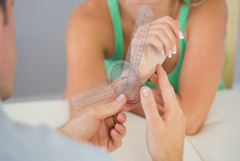
“Hand therapy is the art and science of rehabilitation of the upper limb, which includes the hand, wrist, and shoulder girdle. It is the merging of occupational and physical therapy theory and practice that combines comprehensive knowledge of the structure of the upper limb with function and activity. Using specialized skill in assessment, planning, and treatment, hand therapists provide therapeutic interventions to prevent dysfunction, restore function, and/or reverse the progression of a pathology of the upper limb in order to enhance an individual’s ability to execute tasks and to participate fully in life situations” (HTCC, 2009).
As human beings we value the use of our hand and arm to perform all of the occupations that encompass our lives. Whether it is driving to work or getting dressed, the loss of upper extremity use during these activities as a result of an injury or surgery can be debilitating. A certified hand therapist has the highest level of training in the profession for treating the hand, wrist, elbow, and shoulder. They are required to have at least 5 years of experience including 4000 hours of direct practice in hand therapy. They must also pass a comprehensive exam testing the advanced knowledge of skill and theory required to treat the upper limb.

The human body goes through a number of changes as it grows older. A decline in muscle mass and bone density can lead to muscle fatigue and joint pain. There is good news! Seniors can remain physically active and lead happy, healthy, and productive lives with the help of physical therapy. Exercise in a safe, controlled environment under the supervision of a licensed physical therapist goes a long way to improving the quality of life. A physical therapist can design exercise programs that help seniors cope with some of the issues associated with aging which may include:
Decreases in Strength and Mobility: Physical therapists can develop exercise and strengthening programs designed to keep you as independent as possible as you age. We focus on the tasks in your life that you value most, as well as work to strengthen the body as a whole.
Increased Risk of Falls: Falls can occur due to a loss in the body’s ability to maintain balance, posture, and equilibrium. A physical therapist can create an exercise program to improve muscle tone, strength, joint movement, and balance. This can prevent dangerous consequences like broken bones and allow seniors to stay active and healthy. (Also see balance and fall prevention) (link)
Osteoporosis: This is a condition characterized by loss of bone density and bones that become brittle and prone to fractures. Physical therapy prescribe weight training exercises to increase bone density and improve muscle strength as a cornerstone of prevention.
Pain and Discomfort from Arthritis: Joint wear and tear can result in osteoarthritis. This leads to joint pain and swelling which can restrict movement. Physical therapy includes a variety of treatment options including hot and cold treatments, massage, and range of motion exercises. Splints and orthotic devices can also help.
Urinary Incontinence: Incontinence can occur at any age but becomes more prevalent as we get older. Physical therapists can assist by providing bladder training exercises that can help treat this problem and reduce incontinence in the future.
Prevention and management of these problems associated with aging is much more satisfying than the inactivity and isolation that can occur without active exercise. The human body can always respond, adapt, and grow stronger as long as it is challenged. Physical activity combined with healthy nutrition is important to maintain health and vitality in older individuals. If you feel that you need help in the areas listed above please call your physical therapist or talk to your doctor to discuss how they can help.
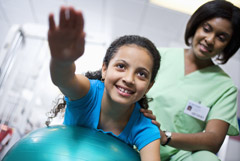
In the pediatric population, physical/occupational therapists use purposeful play in the evaluation and treatment of each child. Skills are learned and mastered through the context of therapeutic play in hopes of enhancing performance of functional and purposeful activities. This approach addresses the child’s physical, social, and emotional needs. Following the child’s lead, a therapist will create a fun and empowering treatment session. Developmental skills are emphasized allowing for progress toward age appropriate activities and movement patterns. Family participation is encouraged for successful implementation and carry over into the home environment. Comprehensive individualized home programs are created, further empowering the family and child.
Most physical and occupational therapy clinics can accommodate children 8 years and older for sports/ physical rehabilitation, but some clinics offer specialized services for children starting in infancy. In all cases it is imperative that a close relationship develop between the parents, pediatrician and therapist.
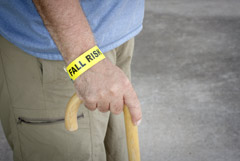
One in every three adults 65 and older fall each year in the United States - WWW.CDC.GOV
A fall is defined as coming down suddenly from an upright position. In 2001, it was reported that 1.6 million seniors were treated in the emergency room as a result of fall-related injuries. After the age of 60, the incidence and resulting complications of a fall increase. Falls can occur anywhere and at any time while at home or in the community. Falls can cause serious injury and even death. Often a person who has fallen is too embarrassed to report the fall because it signals a significant change in his/her stage of life. It is not just the frail elderly individual who may fall, but even those who are active.
Balance, the ability to control and maintain your body's position as it moves through space is an integral part of daily life. There are conditions that may impair your sense of balance and contribute to falls. The effects of aging are the most common causes of balance problems, but injury and disease can also create problems:
Fall prevention conditioning programs offered by physical therapists are designed to increase independence with functional activities, functional mobility, and safety awareness while decreasing fall risk. Research has shown that a successful fall prevention program must be multi-dimensional. A program must address all underlying factors in addition to strength and balance. Physical therapists use valid and reliable assessments to determine all the factors affecting each individual's fall risk. Therapy focuses on reducing the factors and decreasing fall risk. This is consistent with the protocols recommended by: The American Geriatrics Society and the American Academy of Orthopedic Surgeons’ Panel on Fall Prevention Guidelines.
The program is tailored around each individual’s needs. The length of the program is dependent on the severity of the symptoms and the goals of each individual. If you are concerned that you or a family member may be at risk for a fall, please use the fall risk screening questionnaire included on the right.

Dizziness and disequilibrium are second only to low back pain in frequency of occurrence in the adult population. Balance and vestibular deficits are a major medical concern, and the resulting effects of an untreated balance disorder can be devastating. The good news is that in many cases a physical therapy treatment plan can successfully treat the problem, preventing subsequent injury.
Vertigo is the feeling that either you or your environment is moving when you are staying still. It may be described as spinning, light-headedness, or a sense of disequilibrium. It can occur suddenly or gradually. Your symptoms may last seconds, minutes, hours, or days. Your treatment depends on its cause. It is most often caused by problems in the brain or inner ear.
Benign Paroxysmal Positional Vertigo (BPPV) is characterized by a brief episode of vertigo (spinning) when the head moves into a specific position. Common causes for this disorder are trauma to the head (concussion, motor vehicle accident, etc.) and acute infection, but frequently the cause is unknown. Patients usually complain of a spinning sensation being provoked by lying down, rolling over in bed, bending over, or looking up. Common activities that can provoke this sensation include getting out of bed, gardening, washing hair in the shower, and going to the dentist or beauty parlor.
The main symptom that people with BPPV complain of is having a feeling of spinning related to a certain position of the head. Other symptoms may include nausea, occasional dizziness, occasional light-headedness, and an overall sense of not feeling quite right. The symptom of spinning may come on immediately when in the provoking position or it may be delayed from 0 to 40 seconds.
Vestibular rehabilitation therapy is an exercise-based program designed to promote central nervous system compensation for inner ear deficits. A licensed physical therapist will be able to offer a variety of initial services to all patients experiencing dizziness and balance deficits. These include:
Once the initial evaluation is complete, the physical therapist will be able to tailor a specific rehabilitation program specifically to your needs that may include:
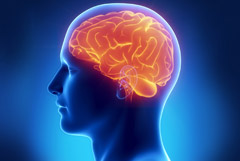
Estimates suggest that 1.6 to 3.8 million concussions occur from participation in sports and recreational activities every year. A head injury is a serious condition which can be life threatening. A concussion is an injury that changes how the brain works. A concussion is caused by a blow to the head or body that causes the brain to move rapidly inside the skull. Even a “ding,” “getting your bell rung,” or what seems to be a mild bump or blow to the head can be serious. Concussions may also result from a fall or colliding with obstacles, such as a goalpost or in a work or home environment.
People with a concussion need to be seen by their physician. If you think you or someone you know has a concussion, contact your health care professional. Getting help soon after the injury by trained specialists may speed recovery.
Research shows that athletes demonstrate decreased stability up to 3 to 5 days post injury. This can be result of ineffective use of one or more sensory systems. The recovery period related to concussion coincide with the recovery of postural stability as well as normalization of eye-head coordination and return of cognitive function. There is strong evidence demonstrating the impact of balance deficits on functional performance and increased risk of re-injury.
A physical therapist can help treat post-concussion syndrome by designing an individualized rehabilitation program.
EVALUATION: A licensed physical therapist will take the time to talk with you and perform a thorough examination of your condition.THERAPY: Your physical therapist will plan a treatment program suited to your individual condition, which will involve exercises for your balance, vision, inner ear and more in order to restore brain function.
TEACHING: Your physical therapists will spend time reviewing information with you regarding your diagnosis and progress as well as answering your questions. It’s important to empower patients to make a lifelong impact on their health.
RETURN TO SPORT/WORK: Your physical therapist is uniquely qualified to guide you towards safe return to sport. They will guide you through a stepwise protocol to keep you symptom free throughout the process and to prevent you from serious, life-threatening conditions associated with a second head injury due to early return to sport.
Parents: Available for download is a factsheet created by the CDC, on what to look for and what actions to take in the occurrence of a concussion. FLYR_ConcussionABC_PTandME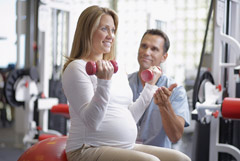
Women’s Health Programs are typically designed to provide women with comprehensive services for the treatment of sensitive issues such as Urinary Incontinence, Pelvic Floor Dysfunctions & Pregnancy and Postpartum-related musculoskeletal disorders. Specially-trained physical therapists provide assessment and treatment in a supportive and private environment. A personalized treatment approach is designed to meet each patient’s needs. A therapist specializing in women’s health may treat the following:
According to the National Association for Continence (NAFC), urinary incontinence (UI) affects 25 million Americans; 75-80% of those affected are women.
UI is a social and hygienic problem for women of all ages. It is characterized by involuntary, uncontrollable leakage of urine. The social embarrassment experienced by those who endure loss of bladder control can often be powerful enough to prevent them from seeking help from a healthcare provider. It is a myth that urinary incontinence is a normal part of aging and there is nothing that can be done about it. Physical Therapy is effective in treating two main types of urinary incontinence:
Pelvic floor disorders may present individually or as a cluster. Some of the most common conditions listed below can be treated effectively through a combination of pelvic floor muscle strengthening, neuromuscular re-education and manual therapy techniques.
A urinary incontinence program typically focuses on strengthening weak pelvic floor muscles, increasing tone and flexibility, decreasing pain, and restoring optimal function. Sessions with each patient will be conducted in a private environment, where women will learn to regain muscular and will be able to restore their active lifestyles.
Pregnancy can cause a number of physical changes such as weight gain, strain on the abdominal muscles and lumbar spine, and ligamentous laxity. These changes may cause pain that result in difficulty performing daily activities. A pregnancy and post-partum therapy program may provide:
In women, the pelvic floor muscles are often damaged during childbirth and can lose strength as hormone levels decrease after menopause.
Biofeedback was first used by Dr. Arnold Kegel in the late 1940s to teach patients how to strengthen pelvic floor muscles (PFM). Unfortunately, most people find it difficult to identify and correctly perform Kegel exercises. The good news is that special computerized biofeedback devices can identify PFM and can assist you in controlling the performance of these muscles through visual and tactile feedback.
All muscles in our body give off a small electrical signal that can be monitored with electromyography (EMG). By placing small surface electrodes close to the muscles being monitored (SEMG) and then connecting it to a computer, biofeedback devices provide visual feedback. This information can be utilized to generate a customized exercise prescription.
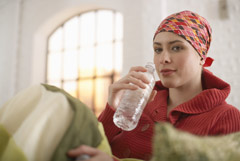
Cancer-Related Fatigue (CRF) is a feeling of extreme tiredness and is usually accompanied by other symptoms. CRF is a debilitating condition that can seriously affect your health and quality of life. Most importantly it can significantly interfere with your home life and may limit the effectiveness of chemotherapy cycles. It is the number one complaint of cancer patients and it is a nearly universal problem affecting 78% to 96% of those undergoing treatment.
Previous advice for cancer patients was often to get more rest and avoid activities that are physically challenging. However, recent studies have shown that exercise was found to be effective in preventing or reducing CRF. No adverse effects from exercising have been reported. “Identified as remarkably underutilized, exercise is one of the few interventions suggested to diminish CRF and other psychosocial symptoms. The positive affect of exercise on CRF should underscore the need for physical therapists’ involvement in the rehab of patients with cancer.”
Licensed physical and occupational therapists can provide specialized therapeutic services that address the needs of CRF patients. Therapy sessions last approximately thirty minutes to one hour, depending on the patient’s tolerance. Average number of visits a week is 2-3. The program is concurrent with the cancer therapy and may last throughout the entire treatment phase. CRF is a very complex problem that requires a thorough physical therapy evaluation, where a team approach with the physicians is maintained.
Physical and occupational therapy can help a patient regain/keep their strength and mobility as they are treated and recover from cancer. Licensed therapists have the tools to bring a patient to their full function safely through exercise and education.
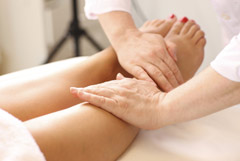
Patients who present with edema from a variety of diagnoses such as oncological, orthopedic, lymphatic, or vascular can benefit from peripheral edema management. The goal of physical and occupational therapy is managing any of these types of edema is rapid reduction of edema in the involved area to hasten return to normal function.
Trauma, surgery, and sports injury can cause acute swelling in the affected joint. This edema leads to a reduction of joint mobility, range of motion, and proprioception combined with pain and stiffness. Manual lymphatic drainage (MLD) combined with compression bandages can increase the interstitial fluid pressure, facilitate lymphatic drainage, and accelerate the healing process. Some diagnoses that respond well to this type of care are
Lymphedema, the accumulation of fluids, is due to the disruption in the lymphatic system. This type of swelling is seen after trauma to the body, radiation treatment, and often when lymph nodes are surgically removed. Patients may develop lymphedema after breast surgery. The good news is this is a treatable condition that can be controlled through the combination of:
This program makes significant improvements by restoring functional mobility and strength, reducing swelling and pain, and improving cosmetic appearance.